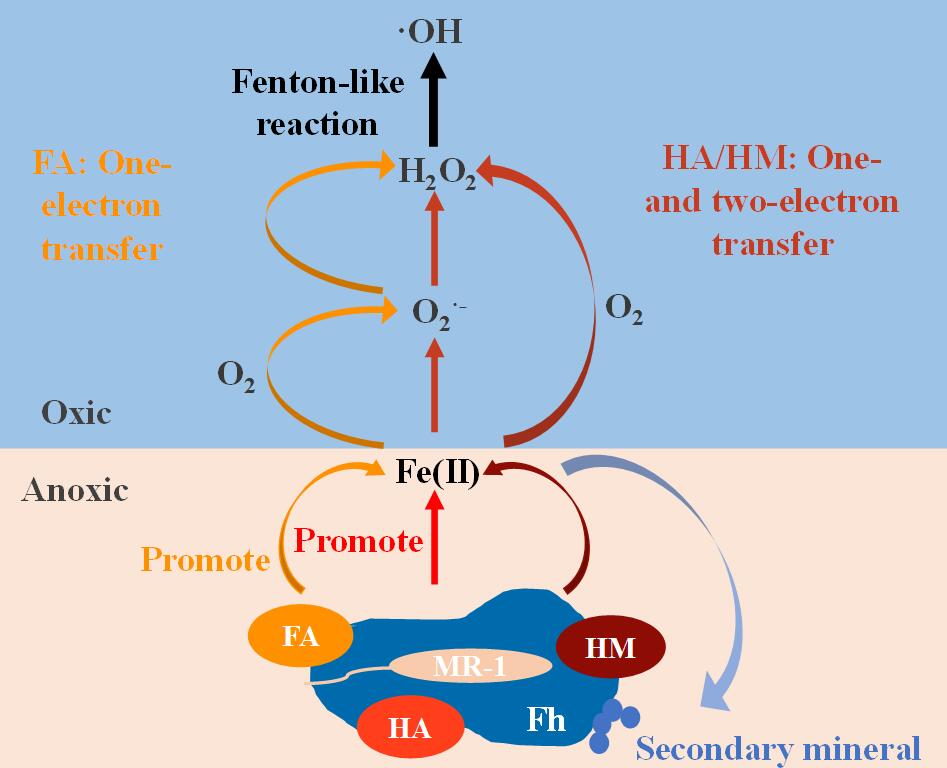| Location: Home > Papers |
| First Author: | HAN Ruixia |
| Abstract: |
Microbially mediated iron redox processes are of great significance in the biogeochemical cycles of elements, which are often coupled with soil organic matter (SOM) in the environment. Although the influences of SOM fractions on individual reduction or oxidation processes have been studied extensively, a comprehensive understanding is still lacking. Here, using ferrihydrite, Shewanella oneidensis MR-1, and operationally defined SOM components including fulvic acid (FA), humic acid (HA), and humin (HM) extracted from black soil and peat, we explored the SOM-mediated microbial iron reduction and hydroxyl radical (.OH) production processes. The results showed that the addition of SOM inhibited the transformation of ferrihydrite to highly crystalline iron oxides. Although FA and HA increased Fe(II) production over four times on average due to complexation and their high electron exchange capacities, HA inhibited 30–43% of the .OH yield, while FA had no significant influence on it. Superoxide (O2.–) was the predominant intermediate in .OH production in the FA-containing system, while one- and two-electron transfer processes were concurrent in HA- and HM-containing systems. These findings provide deep insights into the multiple mechanisms of SOM in regulating microbially mediated iron redox processes and .OH production.
|
| Contact the author: | LI Gang |
| Page Number: | |
| Issue: | |
| Subject: | |
| Impact Factor: | |
| Authors units: | |
| PubYear: | October 12 2022 |
| Volume: | |
| Publication Name: | ENVIRONMENTAL SCIENCE & TECHNOLOGY |
| The full text link: | https://doi.org/10.1021/acs.est.2c03799 |
| ISSN: | |
| Appendix: |
